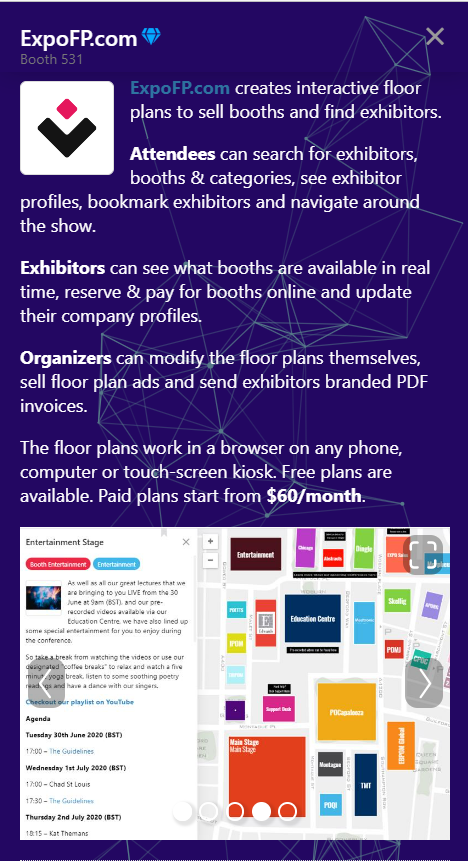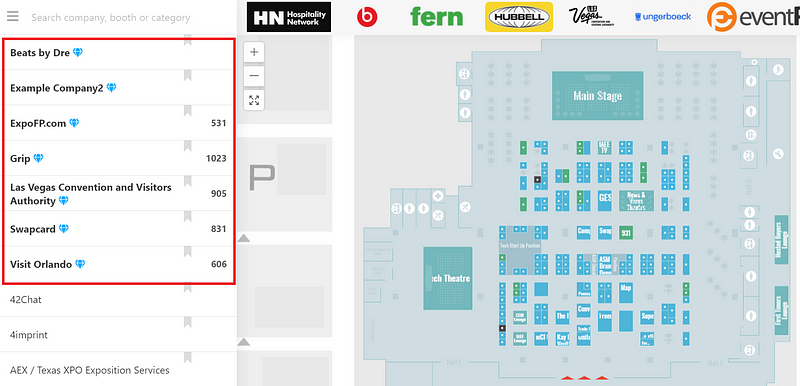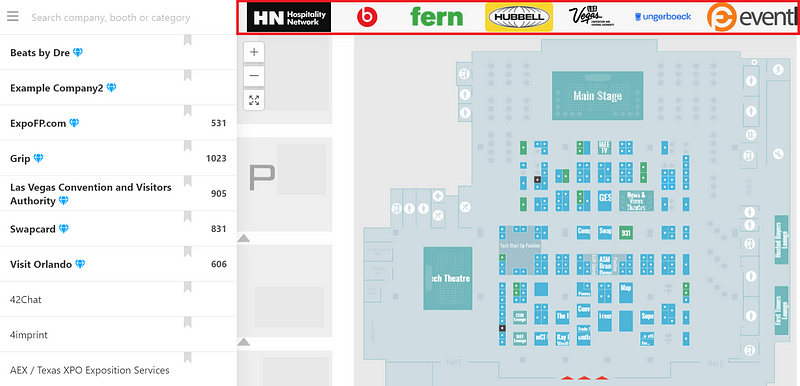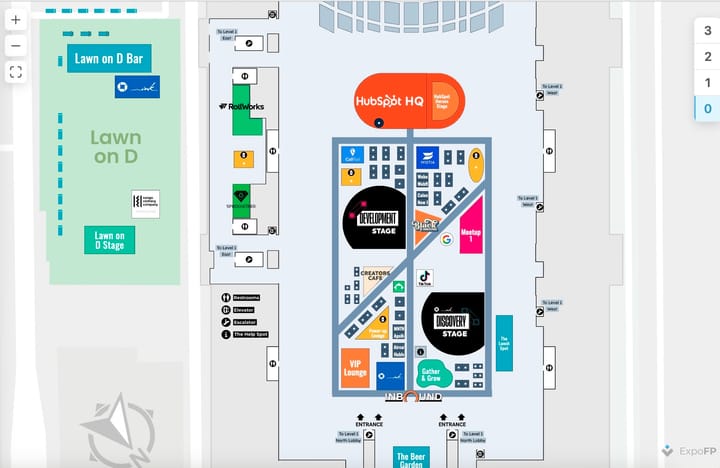How to Promote Your Company at an Expo?
Trade shows are a great way to showcase your organization. To get the maximum impact from your presence, follow these tips.


Trade shows are a great way to showcase your organization. To get the maximum impact from your presence, follow these tips.
Step 1: Do research
Evaluate trade show details carefully: number of exhibitors, average attendees, attendee demographics by job function, etc. If possible, speak with past exhibitors.
Here’s what to consider for an attendance-worthy conference or trade show:
- Relevancy. Can you expect potential clients/customers who might make purchases?
- Solid website. A well-developed website indicates the organizers’ attention to detail and investment in the event.
- Active social media. Check if they effectively use social media to engage attendees, speakers, and increase event exposure.
- Big-name speakers. Their presence attracts media coverage and high-quality attendees.
- Past media coverage. Previous media attention indicates the potential for media presence at the current event.
- Attendee profile. Ensure that attendees include your target categories such as investors, clients or partners.
Step 2: Define your goals
Determine your goals for attending conferences, conventions and trade shows. While professional development is important, it may not immediately result in financial gain. However, there are various ways to achieve a return on investment at these events. Here are some of them:
- Network with industry influencers
- Create marketing materials (e.g., photos, videos) for future use
- Pitch potential clients and investors
- Increase exposure by engaging with attending media and securing interviews
- Utilize social media to enhance your profile and gain new followers
- Expand your marketing lists (e.g., newsletters)
- Leverage speaking opportunities to establish yourself as a thought leader in your industry
Certain strategies yield quicker ROI than others. While networking with industry thought leaders is beneficial in the long term, it may not generate immediate cash. Pitching potential clients and investors at conferences can be highly valuable, making the cost of an expensive ticket worthwhile. However, it’s crucial to pitch in a way that resonates with people. Avoid approaching your target abruptly or launching into your pitch, as it can make you appear inexperienced and waste everyone’s time.
Step 3: Prepare
You might feel like there is already enough to do while getting ready for a conference or trade show, but a little bit of pre-planning in certain areas can yield positive results:
- Seek speaking opportunities. If you or a colleague have experience in your field and have an interesting topic to present, try securing a speaking gig to gain visibility and potential benefits. Speakers sometimes receive free or discounted booth space and/or event tickets. In some cases, they may even get paid for their participation.
- Assess competition. Identify attending competitors, including their booth sizes, locations and event-based marketing strategies in order to plan accordingly.
- Gather information. Inquire about attendee numbers, expected media presence and other details to enhance your knowledge of the event.
Step 4. Ensure visibility before and at the event
We all know that the physical location of your booth at an event is important, but here are some other ways you can stand out using interactive floor plans.
As an exhibitor, you can add your company logo, a description and images to the gallery on your profile. Visitors can visually know what your business is and what you will offer to them when they click on your profile:
How to Promote Your Company at an Expo?
Trade shows are a great way to showcase your organization. To get the maximum impact from your presence, follow these tips.
Step 1: Do research
Evaluate trade show details carefully: number of exhibitors, average attendees, attendee demographics by job function, etc. If possible, speak with past exhibitors.
Here’s what to consider for an attendance-worthy conference or trade show:
- Relevancy. Can you expect potential clients/customers who might make purchases?
- Solid website. A well-developed website indicates the organizers’ attention to detail and investment in the event.
- Active social media. Check if they effectively use social media to engage attendees, speakers, and increase event exposure.
- Big-name speakers. Their presence attracts media coverage and high-quality attendees.
- Past media coverage. Previous media attention indicates the potential for media presence at the current event.
- Attendee profile. Ensure that attendees include your target categories such as investors, clients or partners.
Step 2: Define your goals
Determine your goals for attending conferences, conventions and trade shows. While professional development is important, it may not immediately result in financial gain. However, there are various ways to achieve a return on investment at these events. Here are some of them:
- Network with industry influencers
- Create marketing materials (e.g., photos, videos) for future use
- Pitch potential clients and investors
- Increase exposure by engaging with attending media and securing interviews
- Utilize social media to enhance your profile and gain new followers
- Expand your marketing lists (e.g., newsletters)
- Leverage speaking opportunities to establish yourself as a thought leader in your industry
Certain strategies yield quicker ROI than others. While networking with industry thought leaders is beneficial in the long term, it may not generate immediate cash. Pitching potential clients and investors at conferences can be highly valuable, making the cost of an expensive ticket worthwhile. However, it’s crucial to pitch in a way that resonates with people. Avoid approaching your target abruptly or launching into your pitch, as it can make you appear inexperienced and waste everyone’s time.
Step 3: Prepare
You might feel like there is already enough to do while getting ready for a conference or trade show, but a little bit of pre-planning in certain areas can yield positive results:
- Seek speaking opportunities. If you or a colleague have experience in your field and have an interesting topic to present, try securing a speaking gig to gain visibility and potential benefits. Speakers sometimes receive free or discounted booth space and/or event tickets. In some cases, they may even get paid for their participation.
- Assess competition. Identify attending competitors, including their booth sizes, locations and event-based marketing strategies in order to plan accordingly.
- Gather information. Inquire about attendee numbers, expected media presence and other details to enhance your knowledge of the event.
Step 4. Ensure visibility before and at the event
We all know that the physical location of your booth at an event is important, but here are some other ways you can stand out using interactive floor plans.
As an exhibitor, you can add your company logo, a description and images to the gallery on your profile. Visitors can visually know what your business is and what you will offer to them when they click on your profile:
You can also add YouTube videos of your product or service as a demo. Visitors will be able to understand how it works, and you can invite them to see it live at the event:

You can buy add-ons on the check-out page, such as the sponsorship options and Extras, to increase visibility and offer to the visitors a better experience with your product:

Featured listings allow businesses to be among the other sponsored companies at the top of the exhibitors' list:

Floor plan ads place your company logo at the top banner on the map so that visitors can find your profile and where your booth is located:

You can also find other options, such as logos on bags, show guides or panels, depending on what the organizer offers to you.
Step 5: Make it easy to find your booth
Trade shows with digital wayfinding help to make a route to your booth from their current location. However, an even better option is QR-based wayfinding. Visitors can scan printed QR that can be placed at the entrance and be guided directly from their current location to your booth. This feature is an effective way to attract more visitors to your stand.
Step 6: Don’t forget about PR
Promote your presence at the trade show through various channels. Send direct mail to confirmed attendees or a targeted list. Or announce it on your website, through email campaigns, newsletters, blog, social media and email signatures. If you’re organizing a contest or prize drawing, advertise it as well. Ensure that everyone knows the location of your booth for easy finding. Send a press release before the event to announce your new or updated product design.
Build social media lists
Create Twitter or other social media lists for every trade show, conference and event your business attends. Interact with key players before the event (approximately 30 days) to establish familiarity. Retweet, like and engage with their tweets without pitching them. Once you see them at the show, they will already be familiar with you.
Step 7: Run a product demonstration
Run product demonstrations to showcase your offerings and demonstrate their functionality. Consider utilizing the event to launch new products or upgrades, as it can generate significant interest. Promote any upcoming product launches through your website, social media and email prior to the event.
Step 8: Just have fun!
At the end of the day, trade shows are all about connecting with the people of your industry, networking and spending time effectively with your favorite (we hope) colleagues.



